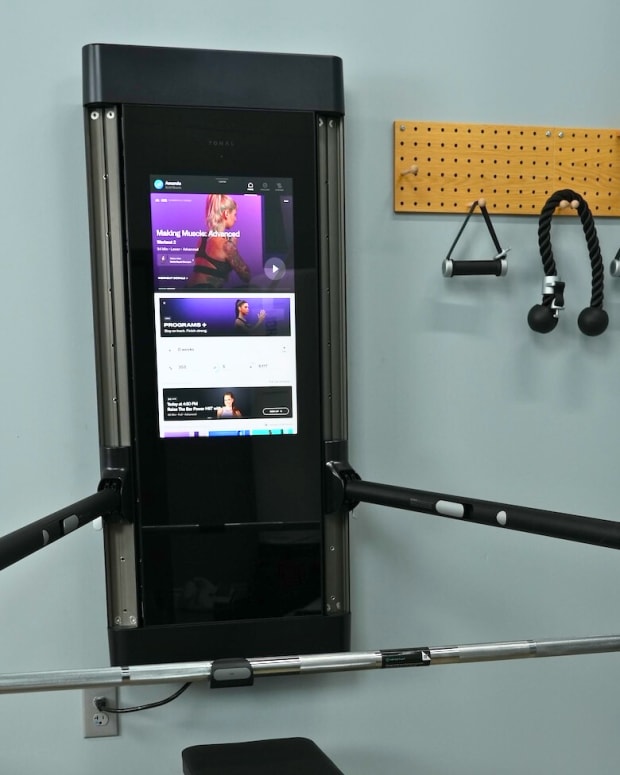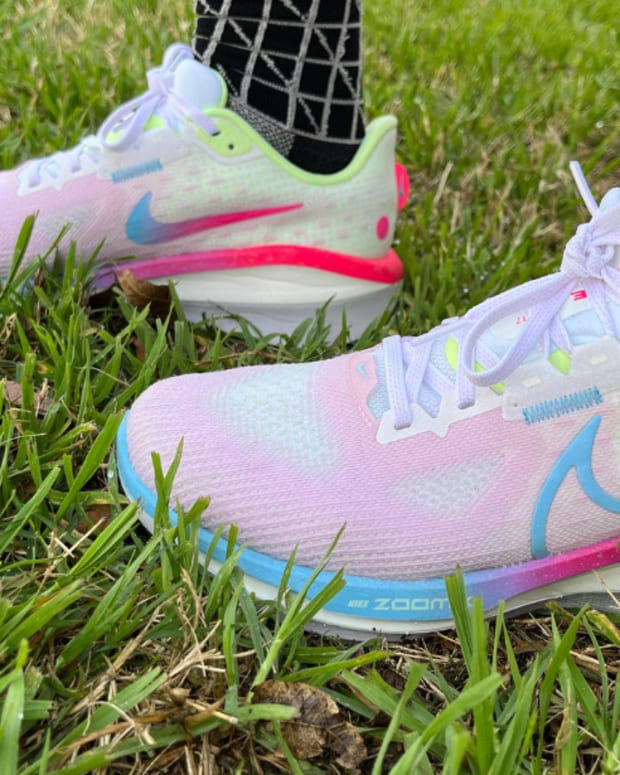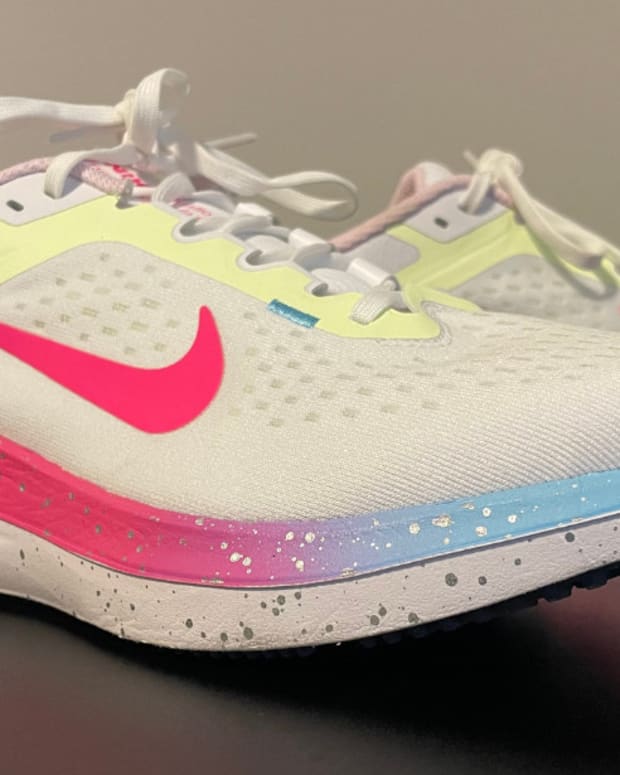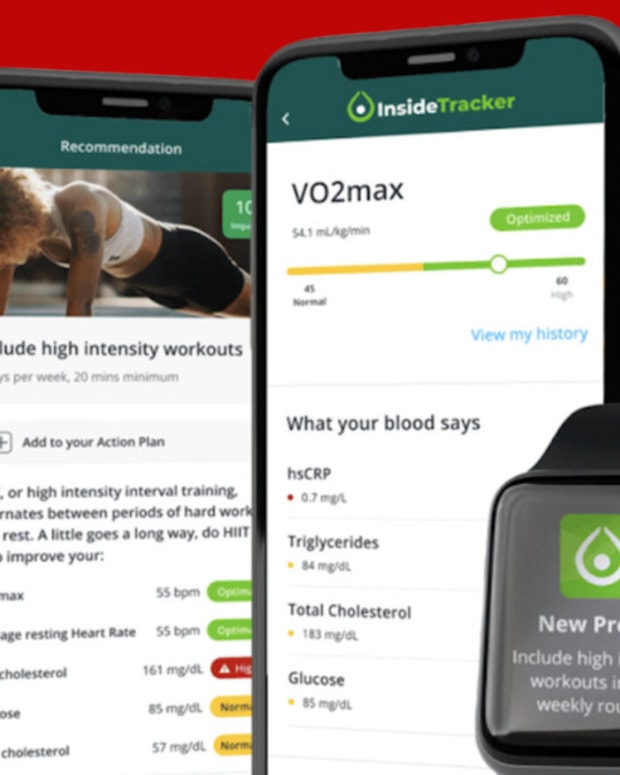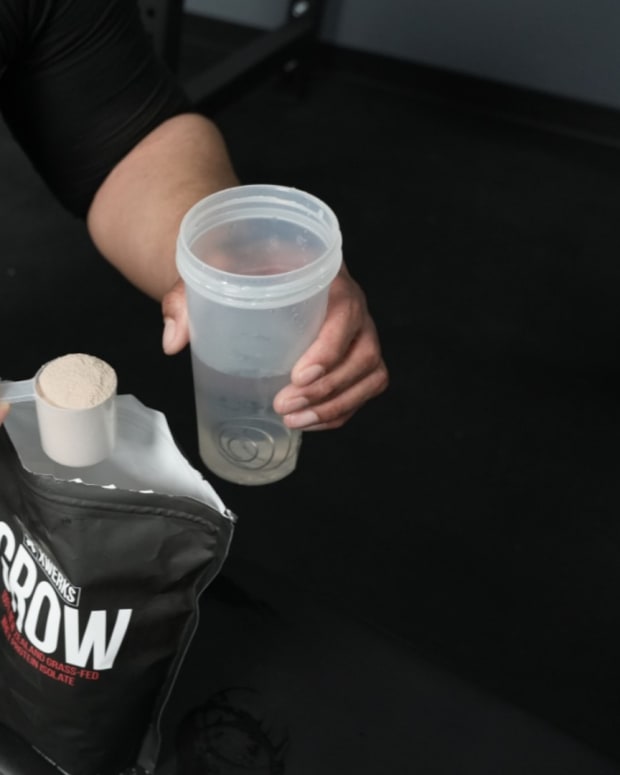The products featured in this article have been independently reviewed. When you buy something through the retail links on this page, we may earn commission at no cost to you, the reader. Sports Illustrated editorial staff are not involved in the creation of this content. Learn more here.
Unless you're cycling indoors, bike helmets are an essential piece of safety gear—they are made to protect you from traumatic brain injuries. Research has shown that helmets are effective in reducing risk of severe traumatic brain injury (TBI), facial injury and death in the event of a crash. Helmets equipped with technology such as MIPS (more on that below), SPIN and WaveCel have been tested and found to reduce the risk of TBIs, with MIPS and SPIN-equipped helmets performing best.
It’s important to note that the area of impact affects the helmet’s protection, and research suggests that more effective and comprehensive testing that imitates real-world situations needs to be done to determine which type of protection is best. That’s not to say you should avoid a helmet until the more results are in—the data is clear: It’s important to wear a helmet for safety.
With that in mind, we’ve rounded up the best bike helmets on the market in 2024, no matter the type of cycling you’re into. You’ll be able to find one that fits your budget, riding style and overall safety needs.
Our Picks for The Best Bike Helmets of 2024:
- Best Mountain Bike Helmet: Poc Kortal Race MIPS
- Best Road Bike Helmet: Bontrager Circuit WaveCel
- Best Kids’ Bike Helmet: Specialized Shuffle LED MIPS
- Best Full-Face Helmet: Smith Mainline MIPS
- Best Commuter Bike Helmet: Thousand Heritage
- Best Electric Bike Helmet: Nutcase VIO LED MIPS helmet
- Best Budget Bike Helmet: Louis Garneau Eddy II
Best Mountain Bike Helmet: POC Kortal Race MIPS
Key features:
- $250
- Certified to Dutch NTA 8776 electric bicycle helmet standard—meaning it’s equipped for protection in higher impact speeds
- Uses MIPS Integra technology, an elevated safety feature designed to reduce rotational forces during impact for protection
The POC Kortal Race MIPS mountain biking helmet packs in a lot of safety features, which is also reflected in its price tag. The unisex helmet is available in five colors and three sizes (small, medium and large) so you can find the style and fit that works for you. With 17 vents, you’ll find the helmet to be aerodynamic and breezy. The visor is goggle-friendly, so you can stay protected even when traversing the muddiest of trails.
Pros:
- Comes with 17 vents and a detachable visor to keep you cool on your hottest rides
- Integrated NFC Medical ID chip stores your info in case of emergency
- RECCO® reflector enhances radio signals from search-and-rescue RECCO detectors, to help in the case of search-and-rescue
Cons:
- Expensive
- Some reviewers say this helmet isn’t as comfortable as others in this price range
Best Road Bike Helmet: Bontrager Circuit WaveCel
Key features:
- $160
- WaveCel helmet technology
- Magnetic light mounts
- BOA Fit System for a secure fit
This road bike helmet comes in four sizes (small to extra-large) to accommodate head size and hairstyles. The WaveCel helmet technology is a Bontrager exclusive, using gel-like walls to keep your head safe. (It’s comparable to and a competitor of MIPS, which is widely used as a safety feature in a gamut of helmet brands.) Outfitted with a magnetic mount that can be useful on your commute (lights) or a fun way to record your weekend excursions (GoPro), this helmet doubles in function.
Pros:
- The magnetic mount system allows for seamless light or GoPro camera mounting, so you can capture footage on the go
- Moisture-wicking and washable helmet pads help eliminate stink and sweat that can accumulate in other helmets
- Bontrager offers a free replacement if you crash in the first year of ownership
Cons:
- Some reviewers say the magnet isn’t strong enough to hold what’s mounted during intense mountain bike sessions
- The helmet is on the heavier side (383 grams) with the mount, so once you have lights or a GoPro, the weight may be uncomfortable for some
Best Kids’ Bike Helmet: Specialized Shuffle LED MIPS
Key features:
- $60
- An LED light on the back of the helmet for safety and visibility
- Clip-On Visor
- MIPS equipped for safety
- Fits best on kids ages four to seven (depending on head size).
As a parent, you want to keep your kid safe. Enter the Specialized Shuffle LED MIPS helmet. While the helmet comes in one size, it is equipped with the brand’s Headset SX fit system geared for youth heads, so you can dial in a custom fit. It also includes a MIPS liner, for additional protection against impacts. The straps mimic that of adult helmets for comfort, and it looks like a cool mountain bike helmet. Kids will love the bright colors it comes in, and parents can feel good about the safety features.
Pros:
- Reviewers say that kids love the light on the helmet and it even makes them want to wear it
Cons:
- The one-size fits all may make it difficult to fit some kids in this model
Buy Specialized Shuffle LED MIPS
Best Full-Face Helmet: Smith Mainline MIPS
Key features:
- $310
- Complete head and facial coverage
- 21 vents and an AirEvac ventilation system made to work with goggles
- ASTM F1952 Downhill certified
Smith incorporated Koroyd Impact Protection in this Smith Mainline MIPS helmet for overall protection. This helmet is made for thrill-seekers: those who want to go on intense mountain bike rides and/or go fast on downhill trails. The helmet comes in three sizes, and includes pads you can change out for your perfect fit and comfort. Though this is a full-coverage helmet, so you’d expect it to trap more heat, 21 vents will allow for airflow on the ride. At this price point, it definitely caters to enthusiasts, rather than hobby riders.
Pros:
- Comfortable and breathable
- A D-ring enclosure keeps the helmet secure
- Offers well-rounded protection
Cons:
- Some reviewers say that the MIPS liner in the helmet and the foam inner are very noisy, and this is only amplified when covering rough terrain
- Reduced visibility—you wouldn’t be able to use this as a hybrid helmet
Best Commuter Bike Helmet: Thousand Heritage
Key Features:
- $99
- Built-in visor
- Made for both style and safety
- Magnetic fastener
- Dial-fit system and seven vents for comfort
This sleek Thousand Heritage helmet is made for stylish commuters. The company was started to cater to those who didn’t want to wear a traditional helmet because they didn’t want to ruin their look. (The company name Thousand comes from their goal of saving 1,000 lives by making helmets people actually want to wear). With a visor and fewer vents than a typical helmet, it will help keep you protected from the elements. The Heritage helmet has a vintage-inspired look and come in multiple colors, so you’ll never sacrifice safety for style again. And, the helmet is truly made for commuters—a secret pop lock gives you access to a hidden channel in the back of the helmet where you can thread your lock through.
Pros:
- Comes in seven colors
- Backed by Thousand’s anti-theft guarantee
Cons:
- Designed for urban riding, so you won’t be able to use it on trails
- Doesn’t come with reflective or light features, which is an important safety feature for commuters
Related Post: The Best Hybrid Bikes
Best Electric Bike Helmet: Nutcase VIO LED MIPS helmet
Key Features:
- $150
- Headbadge doubles as a 200-lumen headlamp
- Equipped with 360-degree visibility and LED lights
The Nutcase VIO LED MIPS helmet is styled for a more casual rider, making the perfect helmet for e-bike riders commuting or running errands. Equipped with MIPS technology, this helmet will keep you safe as you ride in style. A removable visor and three large air vents (nine in total) will keep you cool during hot rides. Though the helmet only comes in two sizes, it’s made with a spin dial, so you can adjust the helmet to ensure it is snug on your head for safety. With two layers of built-in foam that double as protection, you’ll be able to ride in comfort. This stylish helmet can go with you on the road, the trail and the beach.
Pros:
- The rechargeable LED light provides extra safety and allows you to be seen by cars or other cyclists
- A headbadge that doubles as a headlamp provides added visibility for those dawn and dusk rides, without requiring the use of a mounted light
- The helmet fastens with a magnetic buckle, so you don’t have to fumble with it on cold mornings
Cons:
- The helmet battery only lasts for about three hours
- The helmet comes in S/M and L/XL, so you may not be able to find a perfect fit
Best Budget Bike Helmet: Louis Garneau Eddy II
Key Features:
- $50
- Helmet stabilizing system can help to adjust the fit
- Features the same Rotexx safety system that comes on all Louis Garneau helmets
The Louis Garneau Eddy II is a great budget bike helmet. Its sleek design and low price point make it a great starter helmet for those not looking to break the bank, while still offering head protection. All Louis Garneu helmets come with the brand’s patented Rotexx technology, which aims to provide better impact absorption, inspired by a fall which left founder Garneau with multiple injuries and a concussion.
Pros:
- Low price point
- Equipped with 17 vents and looks like many helmets you’d find at a higher price point
Cons:
- One size
- At this price point, the helmet doesn’t offer as many high-rated safety features (like MIPS)
Why Buy a Bike Helmet?
Whether you’re a new cyclist or have been racking up miles for years, a helmet is an essential piece of gear. It is one way you can keep yourself safe in the event of a crash or accident. It’s also an additional layer of protection in the unfortunate event you may be hit by a driver.
What Bike Helmets Are Made of:
Bike helmets are made of Expanded Polystyrene (EPS) foam. The shells are made of plastic, such as PET (similar to plastic containers). As helmets go up in price, the shell is made of polycarbonate to allow for molding and adding additional features, according to the Bicycle Helmet Safety Institute.
How Bike Helmets Work
Most helmets are made with three primary parts: the shell, liner and straps. The liner is made of foam, which is what is made to absorb impact and protect your head, reducing your risk of TBIs in case of a fall or crash. MIPS (which stands for Multi-directional Impact Protection System) is a Swedish company that specializes in helmet-based safety and brain protection. Helmets made with this technology “add protection in helmets against rotational motion,” according to the MIPS site. Rotational motion increases the risk of brain injuries from impact, so this technology is designed to protect from impact at any angle.
Related Post: The Best Bike Racks for Every Type of Car, SUV and Truck
How to Choose the Best Bike Helmet for You
Consider the following attributes when comparing bike helmets.
Intended use
While there are some helmets you can get for multi-purpose use, if you are interested in a specialty focus in cycling (think mountain biking or road racing) you’ll want to get a helmet made for that activity. Helmets that are more specialized will come equipped with features that will help you enjoy your ride even more.
Ventilation
Ventilation is one feature in your helmet necessary for comfort. Aside from the fit, proper ventilation is what’s going to keep you comfortable—and cool—on the road or trail.
Additional safety features
Features like visors, which protect you from the elements, and full-face coverage, which protects downhill riders, are extras to think about when selecting a helmet. Depending on how you plan on riding, you’ll want to look for additional features to make your ride both more comfortable and safer—your helmet should work for all-around head protection.
Cost
The cost of a helmet will vary, depending on features and specialization. Typically, they can range from $50 to $250 and up. While you don’t need to pay hundreds for a helmet, you are paying for safety, so make sure that your budget helmet conforms to the U.S. CPSC safety standards for bicycle helmets.
What Size Helmet Do I Need?
This will be determined by your head size. The size of hat that you wear is generally a good starting point. The Bicycle Helmet Safety Institute has a size chart that you can reference. This is especially helpful if you’ll be ordering your helmet online. The only way a helmet can protect you is if you get a proper fit. You’ll want to make sure that a helmet fits snug, but not too tight and the strap rests securely under your chin.
Related Post: The 11 Best Exercise Bikes for Your Home Gym
FAQs
What color helmet is best?
When it comes to helmet color, this is up to personal preference. If you’re going to be riding on roads or trails where visibility is important for safety, you can opt for a brighter colored helmet or one that is reflective. If you ride in an area that’s very sunny and hot, you may want to choose a white or light-colored helmet, which will retain less heat.
Are glossy helmets better than matte?
Glossy helmets will show bumps and scratches more easily. (Remember, if you’ve crashed on your bike and your helmet took on a significant impact, it’s time for a new one.) Matte helmets will show dirt more, and are generally harder to clean.
Is it better for your bike helmet to be too big or too small?
Ideally, your helmet shouldn’t be too big or too small. Having a snug-fitting helmet is important for your safety. If your helmet is too loose, it will shift around and won’t protect you in an impact. If your helmet is too small, it will be uncomfortable, won’t sit right on your head or provide full coverage and be overall unsafe, just as one that is too loose.
How do you break in a helmet?
There shouldn’t be any break-in period for a new helmet—it should fit comfortably from the moment you adjust the straps to your size.
Are more expensive bike helmets safer?
Not necessarily. The vast majority of helmets meet the same safety standards as set forth by the United States Consumer Protection Commission, whether they cost $20 or $400. However, as helmets increase in price, they may have additional features or certifications that can keep you safer, such as MIPS. That’s not to say that you have to shell out hundreds to reduce your risk of injury, but you’ll need to pay attention to a few key things. Cheaper helmets typically are one-size with simple straps that don’t offer much customization with the fit.
As you increase in price, between $40 and $100, you’ll find more features like a visor and adjustable internal retention system. If you’re looking for a more specialized helmet, say for mountain biking or road cycling, you’ll be looking at a higher price tag. The price of your helmet can also depend on what retailer you are buying from.
How much should you pay for a bike helmet?
This depends on your budget and what you plan to use the helmet for. It also depends if you can find a proper fitting helmet that is well-equipped with protection, such as MIPS. You can find helmets on the low end of the price range that are going to keep you safe, but we wouldn’t recommend relying on a helmet that’s $20 or less.
Final Thoughts
Wearing a bike helmet is important to staying safe while riding. Helmets are designed to protect you from TBIs, but only if they fit properly. You can find a variety of styles and safety technology, so it’s important to do your research before making this important purchase.
Prices are accurate and items in stock as of publish time.








